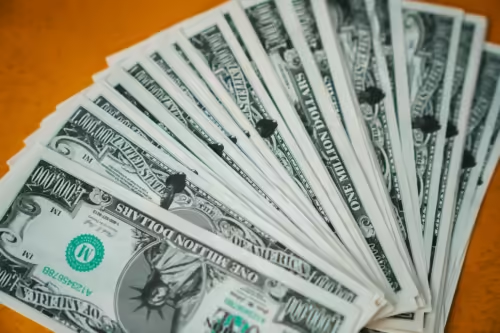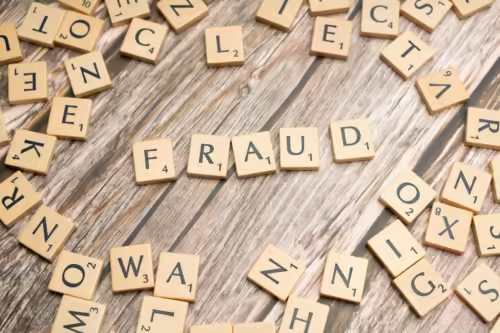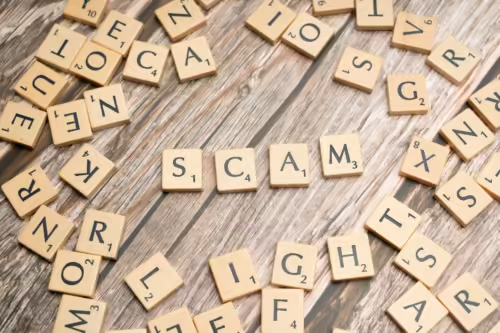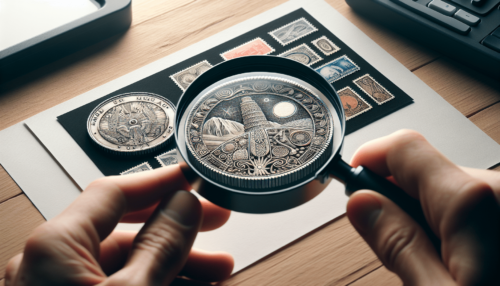How to Spot Fake Coins and Stamps? This question is crucial for collectors, investors, or anyone dealing with coins and stamps. Spotting counterfeit items can save one from significant financial loss and maintain the integrity of collections. In today’s market, the proliferation of counterfeit coins and stamps poses a growing risk, making the ability to identify fakes more essential than ever.
Table of Contents
Overview
This article provides a detailed guide on identifying fake coins and stamps. It covers the historical context, current trends, key concepts, and practical examples related to counterfeit identification. By understanding these aspects, readers can develop the skills necessary to discern authenticity and protect their investments.
Historical Context
Coin and Stamp Collecting
Coin and stamp collecting, also known as numismatics and philately, respectively, have roots dating back centuries. Coin collecting has been a pastime since ancient Rome, where emperors would hold collections of coins from conquered lands. Similarly, stamp collecting surged in popularity shortly after the first postage stamp, the Penny Black, was issued in 1840.
Before modern technology, coins and stamps were simpler to authenticate. Fakes were often crude, with obvious discrepancies in weight, design, or material, making them easier to detect even with the naked eye. However, as methods of counterfeiting grew more sophisticated, so did the need for collectors to enhance their detection techniques.
Evolution of Counterfeiting
The evolution of counterfeiting can be traced back to improvements in technology. Early forgeries often involved simple duplication techniques, but as technology advanced, counterfeiters began employing more sophisticated methods. Modern counterfeit coins might be made using high-precision laser engraving or electroplating, whereas fake stamps might be produced with high-resolution printing technologies that mimic the smallest details.

This image is property of images.pexels.com.
Current Trends
Increasing Prevalence of Fakes
In recent years, the prevalence of counterfeit coins and stamps has increased significantly. Global trade via online platforms has made it easy for counterfeiters to distribute fake items worldwide. For instance, platforms like eBay often see a spectrum of counterfeit items, from obvious fakes to nearly perfect replicas.
Gaining awareness of these trends is vital, as it underscores the importance of due diligence when buying coins and stamps. Collectors must become educated and vigilant, employing both old and new techniques to authenticate their acquisitions.
Technological Advancements in Detection
Fortunately, technological advancements have also improved detection methods. Tools like digital microscopes, X-ray fluorescence (XRF) analyzers, and even blockchain for provenance documentation are helping collectors identify fakes. Professional grading services and certification bodies provide additional layers of assurance, although they come with their own set of considerations regarding cost and the potential for human error.
Key Concepts and Definitions
Numismatics
Numismatics is the study or collection of currency, including coins, tokens, paper money, and related objects. Key attributes in identifying authentic coins include weight, metallic content, design details, and wear patterns.
Philately
Philately is the study and collection of postage stamps and related objects. For stamps, critical features include the paper type, ink, perforations, and cancellation marks.
Digital Microscopy
Digital microscopy refers to using microscopes integrated with digital cameras and software, providing detailed imagery that can detect anomalies not visible to the naked eye. It’s particularly useful in identifying microprinted security features.
X-ray Fluorescence (XRF) Analysis
XRF analysis is a technique used to determine the elemental composition of materials. It’s highly effective in identifying the metallic content of coins, revealing discrepancies that indicate counterfeit materials.

This image is property of images.pexels.com.
Identification Methods
Visual Inspection
The first line of defense against counterfeits is a meticulous visual inspection. This involves examining the coin or stamp for irregularities in design, color, and texture.
Coins
- Design Details: Check for accurate representation of design elements such as inscriptions, portraits, and reliefs. Authentic coins should have sharp, clear details, whereas counterfeit coins often look blurred or less defined.
- Wear Patterns: Genuine coins will show consistent wear patterns based on circulation history. Uneven or unnatural wear can be a red flag.
- Edge: Inspect the edge for correct reeding (ridges) or lettering. Counterfeit coins might display incorrect or inconsistent edges.
Stamps
- Perforations: Authentic stamps generally have uniform perforation sizes and patterns. Inconsistencies here can easily indicate a fake.
- Ink and Color: Genuine stamps typically use high-quality inks. Colors should be consistent and not easily smudged or faded. Counterfeit stamps might show color bleed or fading under scrutiny.
- Paper: The type of paper used can also be telling. Modern or synthetic papers on old stamps are a clear indicator of forgery.
Weight and Dimensions
- Coins: Use a precise scale to measure the weight of the coin. Compare it against official specifications. Even slight deviations can indicate a fake. Additionally, measure the coin’s diameter and thickness to ensure it matches known standards.
- Stamps: Although less applicable than with coins, thickness and paper analysis can still be relevant, especially for high-value stamps where the type of paper used is well-documented.
Magnification and Microscopy
- Coins: Using a magnifying glass or digital microscope, examine the coin’s surface for microprinting, die marks, or other intricate details that are hard for counterfeiters to replicate.
- Stamps: Similarly, under magnification, stamps reveal tiny details like printing dots, watermark patterns, and engravings that are used to authenticate them.
XRF Analysis
As discussed earlier, XRF analysis is highly effective for coins. By analyzing the elemental composition, XRF can reveal whether the metals used match those of authentic coins. Counterfeit coins often fail this test as they might be made of cheaper or different materials.
Provenance and Certification
The history of ownership (provenance) and professional certification are two critical factors in assessing the authenticity of coins and stamps.
- Provenance: Authentic items generally come with a well-documented history of ownership, including previous sales, auctions, or collections. Detailed provenance records add credibility.
- Certification: Professional grading and certification services provide expert analysis and guarantees. Certified items come with documentation that details their authenticity and grading.
Certification Bodies
| Certification Body | Focus | Notable Characteristics |
|---|---|---|
| Professional Coin Grading Service (PCGS) | Coins | Comprehensive grading and encapsulation services |
| Numismatic Guaranty Corporation (NGC) | Coins | Recognized for rigorous grading standards |
| American Philatelic Society (APS) | Stamps | Offers an expertizing service for authentication |
| Philatelic Foundation (PF) | Stamps | Known for detailed certificates of authenticity |
Example 1: The Case of the 1913 Liberty Head Nickel
The 1913 Liberty Head Nickel is one of the most famous and valuable coins in U.S. history, with only five known examples. Its rarity makes it a prime target for counterfeiters.
Authentic Features
- Design: The coin should feature a clear and accurate portrayal of Liberty on the obverse. Particular attention to hair detail and the position of the stars is crucial.
- Weight and Dimensions: An authentic 1913 Liberty Head Nickel weighs 5 grams and measures 21.2 millimeters in diameter.
- Provenance: All five known examples have well-documented histories, including current ownership and traces back to their discovery.
Detection of Fakes
- Visual Inspection: Counterfeits often fail to replicate the fine details correctly. Look for blurred lines or inconsistent design elements.
- Weight and Dimensions: Slight deviations in weight or dimensions from the standard can indicate a counterfeit.
- Microscopy: Use a digital microscope to examine fine details and die marks that are difficult for counterfeiters to reproduce.

This image is property of images.pexels.com.
Example 2: The 1-Cent Z Grill Stamp
The 1-Cent Z Grill stamp, issued in 1868, is one of the rarest and most sought-after stamps in the United States. Only two examples are known to exist.
Authentic Features
- Grill Pattern: The stamp features a unique ‘Z’ grill pattern that presses small squares into the paper. This is a significant authentication factor.
- Color: Genuine stamps have a specific shade of blue known as ‘ultramarine.’ Any discrepancies can indicate a fake.
- Paper and Ink: The type of paper and the quality of the ink are crucial for authenticity.
Detection of Fakes
- Visual Inspection: Examine the grill pattern carefully under magnification. Counterfeits often fail to replicate this intricate detail accurately.
- Color Matching: Compare the color to verified examples. Any color variation should be viewed with suspicion.
- Paper Analysis: Authentic 1-Cent Z Grill stamps use a specific type of paper. Use UV light or other forensic methods to verify the paper type.
Comparison of Detection Methods
Different detection methods can be compared based on their effectiveness, ease of use, cost, and applicability to either coins or stamps.
| Method | Effectiveness | Ease of Use | Cost | Applicability |
|---|---|---|---|---|
| Visual Inspection | Moderate | High | Low | Coins and Stamps |
| Weight and Dimensions | High | High | Low | Coins |
| Magnification | High | Moderate | Moderate | Coins and Stamps |
| XRF Analysis | Very High | Low | High | Coins |
| Provenance | High | Moderate | Varies | Coins and Stamps |
| Certification | Very High | High | High | Coins and Stamps |

Impact Assessment
Coins
For coin collectors, the economic impact of counterfeits can be devastating. Fake coins can significantly devalue collections and erode trust in the market. Implementing rigorous authentication methods can help mitigate these risks.
Stamps
Counterfeit stamps hold similar risks. They can devalue collections and harm the broader philatelic market. Effective detection mechanisms are essential to maintain the integrity of stamp collections and trading activities.
Future Directions and Predictions
Technological Innovations
As technology advances, both counterfeiters and authenticators improve their methods. Predictive trends suggest that the use of blockchain technology for registering and tracking provenance will become more common. This will enable collectors to trace the history of items more confidently.
Enhanced Detection Tools
Future developments might include more portable and affordable tools for collectors, such as handheld XRF analyzers or smartphone-enabled digital microscopes. These will empower individual collectors to perform basic authentication before making purchasing decisions.
Societal Implications
The ability to accurately identify counterfeit coins and stamps supports the sustainability of these hobbies and preserves historical artifacts’ cultural value. It ensures that false items do not circulate within genuine collections and that future generations can appreciate and study authentic pieces.
Conclusion
In summary, the detection of fake coins and stamps involves various methods, including visual inspections, weight and dimensions measurements, magnification tools, and advanced technological techniques such as XRF analysis. Provenance and professional certification provide additional layers of assurance. By employing these strategies and staying informed about current trends and technological advancements, collectors can significantly mitigate the risks associated with counterfeit items.
Final Thoughts
Knowing how to spot fake coins and stamps is more essential than ever. As counterfeit methods become increasingly sophisticated, so too must the tools and techniques used to detect them. What are your thoughts on the most effective methods for identifying counterfeits?
For further information, readers can consult additional internal resources and guides on advanced numismatic and philatelic authentication techniques.

